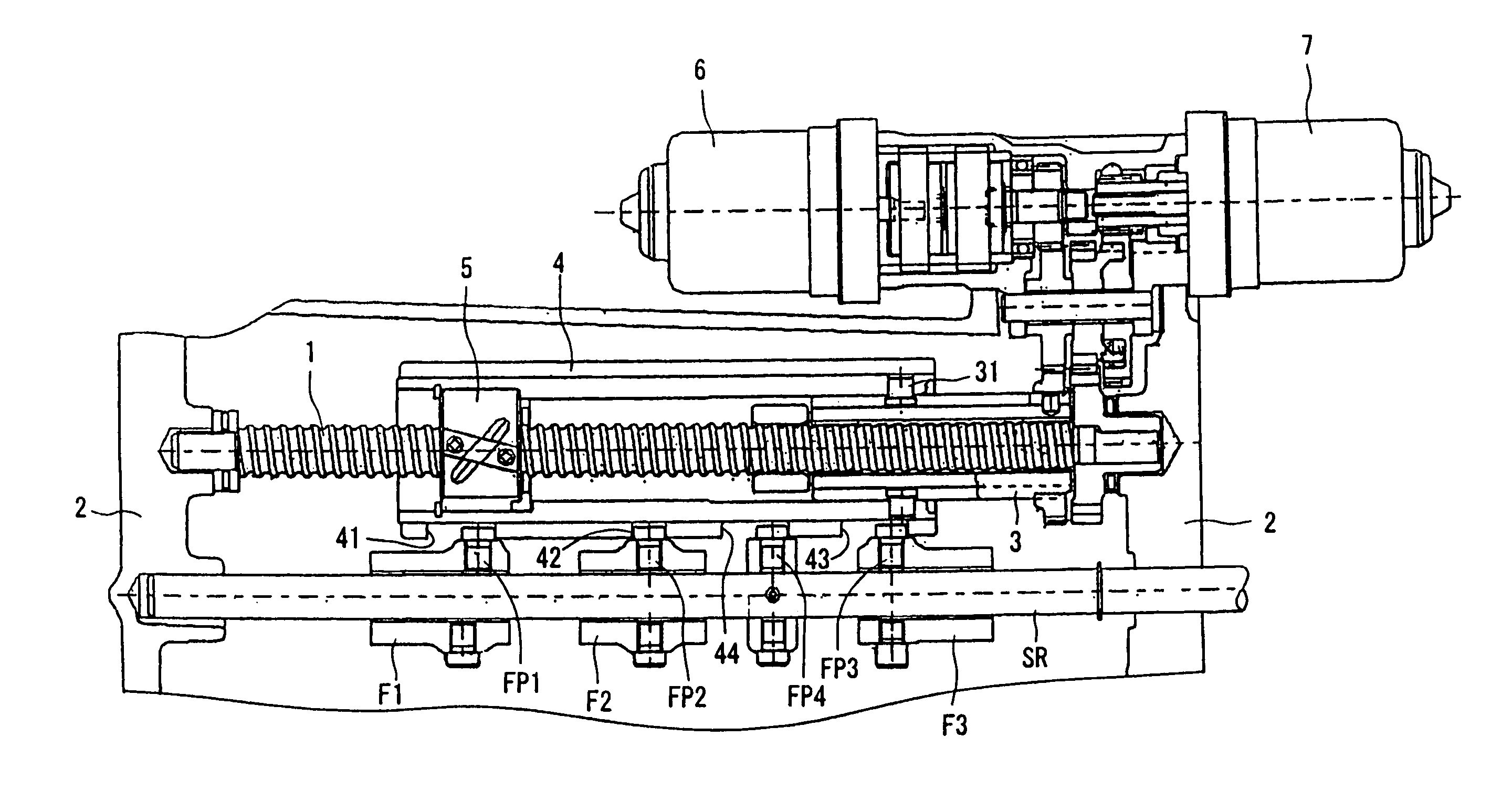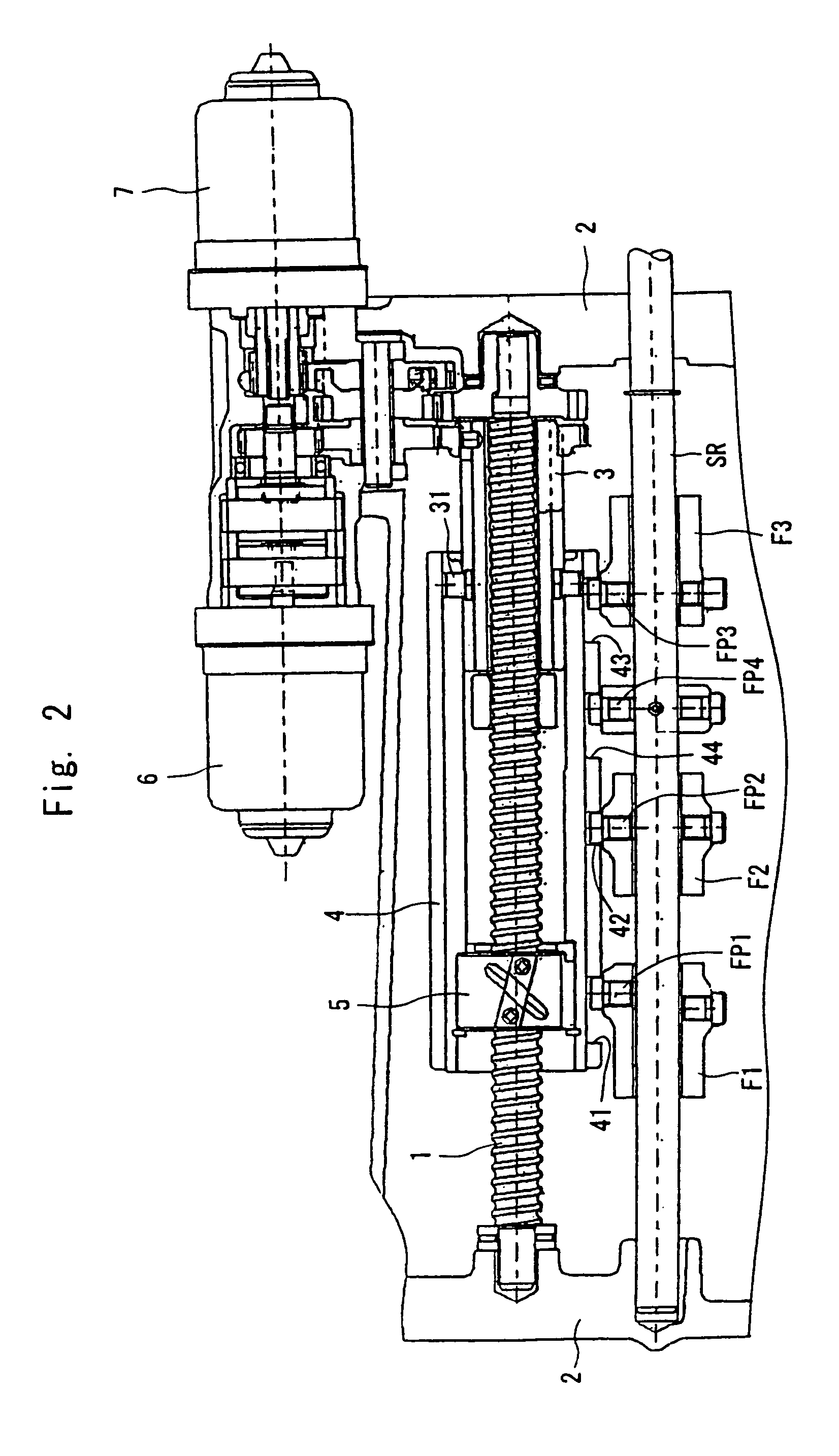Speed change device of a transmission
a technology of speed change device and transmission, which is applied in the direction of gearing control, mechanical equipment, transportation and packaging, etc., can solve the problems of power interruption, reduce the size of the drive unit, reduce the outer diameter of the cylindrical drum, and reduce the rotational torque required
- Summary
- Abstract
- Description
- Claims
- Application Information
AI Technical Summary
Benefits of technology
Problems solved by technology
Method used
Image
Examples
Embodiment Construction
[0046]An embodiment of the speed change device of the invention will now be described with reference to the drawings. In this embodiment, the invention is adapted to the speed change device of the dual clutch type transmission. First, the structure and operation of the dual clutch type transmission will be briefly described with reference to FIG. 1.
[0047]In the dual clutch type transmission, there are arranged a first input shaft S1 and a second input shaft S2 of a double tubular structure, the second input shaft S2 extending rearward penetrating through the first hollow input shaft S1. At the front parts of the input shafts, there are provided a first clutch C1 and a second clutch C2 of the type of wet multiple disks arranged in concentric, the input sides of the respective clutches being connected to an engine output shaft. An intermediate shaft (counter shaft) S3 is installed in parallel with these input shafts, and an output shaft S4 of the transmission continuous to a propeller...
PUM
 Login to View More
Login to View More Abstract
Description
Claims
Application Information
 Login to View More
Login to View More - R&D
- Intellectual Property
- Life Sciences
- Materials
- Tech Scout
- Unparalleled Data Quality
- Higher Quality Content
- 60% Fewer Hallucinations
Browse by: Latest US Patents, China's latest patents, Technical Efficacy Thesaurus, Application Domain, Technology Topic, Popular Technical Reports.
© 2025 PatSnap. All rights reserved.Legal|Privacy policy|Modern Slavery Act Transparency Statement|Sitemap|About US| Contact US: help@patsnap.com



